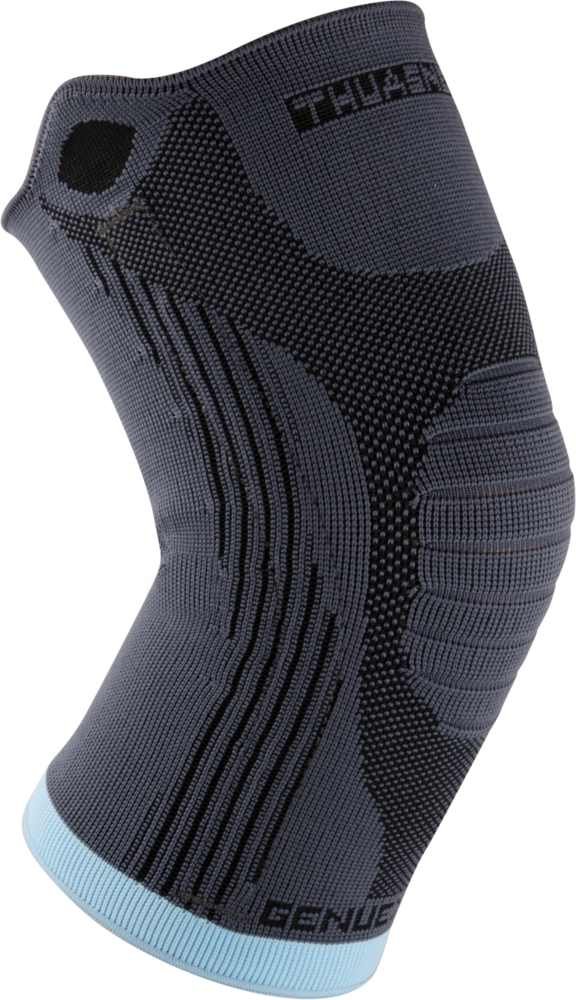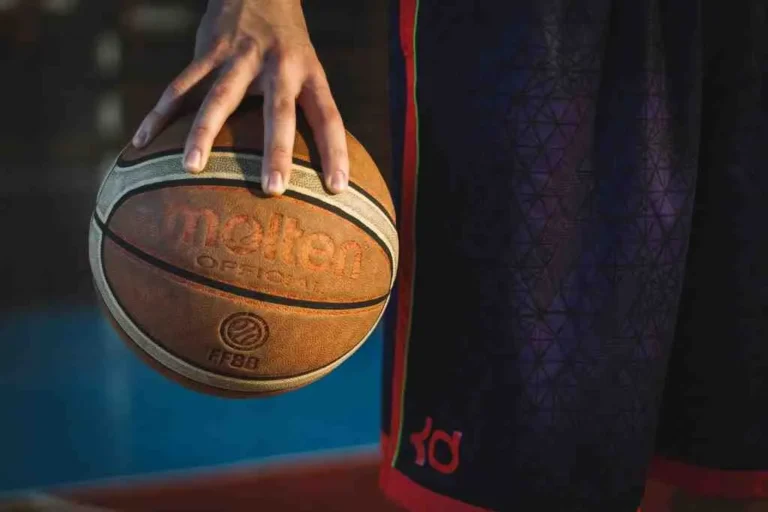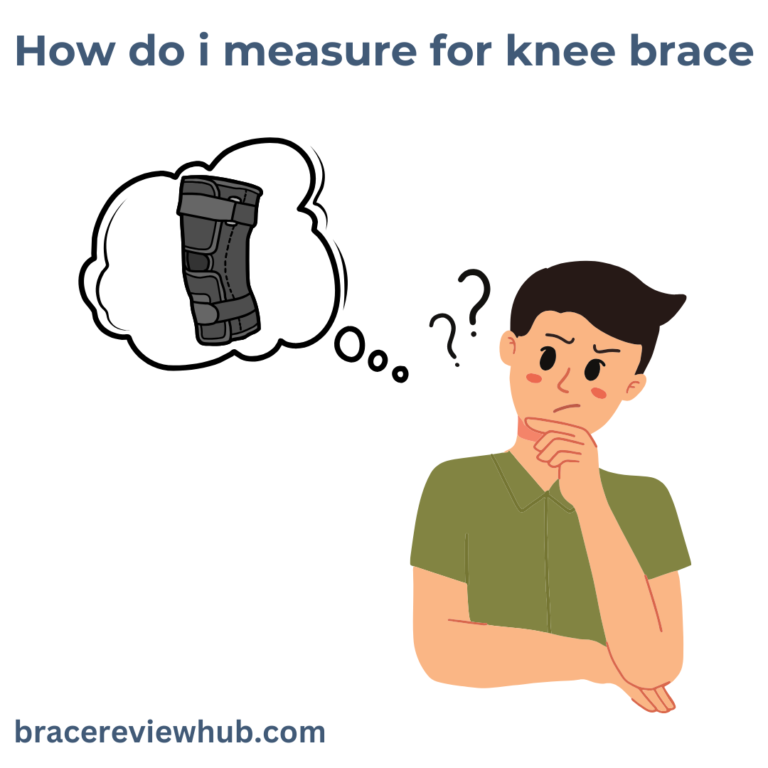5 Essential Tips for Choosing the Perfect Knee Brace for Running
The choice in a knee brace for running can mean the difference between pain and wear on your body. There are so many choices all over the market, it might be impossible to spot one that you truly like. However, fear not! So we have the top five tips here to make it easier for you — and save a headache or four…
We can help you understand your needs, the cost of different styles and materials… how long they last…. Whether you care about the support, quality, help or overall durability of your pillow we have catered to all preferences with our tips on what often worked best for practical usage.
Understanding the Importance of Choosing the Right Knee Brace for Running
Importance of Proper Selection
Selecting the right knee brace for running is important to prevent further injury. A well-fitted knee brace offers stability and support, reducing pain and discomfort during physical activity. Moreover, wearing the appropriate knee brace can help enhance performance and may be important for professional runners to maintain their training regimen without disruptions.
When choosing a knee brace for running, consider factors such as adequate support, protection against impact, and relief from any existing pain or discomfort. Ensure that the knee cap is adequately supported by the brace to avoid any potential injuries or strains while running. By providing additional stability to the knee joint, a suitable brace can help alleviate strain on this crucial part of your body.
Fit and Comfort
Opt for a knee brace for running that fits comfortably around your leg without being too tight or restrictive. The right fit will ensure that you can move freely while still receiving the necessary support during your runs to prevent knee injuries. It’s essential to find a balance between snugness and comfort when selecting a knee brace—too loose won’t provide ample support, while overly tight braces may restrict blood flow or cause discomfort.
Consider whether you require extra padding in specific areas where you experience more pressure or pain while running. Some braces come with adjustable straps or pads that allow you to customize them according to your needs. These features can enhance both comfort and effectiveness in providing pain relief during physical activities.
Factors to Consider when Selecting a Knee Brace for Running
Type and Severity of Knee Injury
When choosing a knee brace for running, it’s crucial to assess the type and severity of your knee injury. For minor sprains or strains, a basic sleeve-style knee brace might suffice. However, for more serious injuries like ligament tears or arthritis, hinged knee braces provide additional support. Understanding your specific condition will help you determine the most suitable type of brace.
Consider the level of protection needed based on the nature of your injury. For example, if you have mild discomfort from overuse during running, a compression sleeve could offer ample support. On the other hand, if you are recovering from surgery or dealing with chronic pain due to conditions like arthritis, opting for a more structured and supportive hinged knee brace would be beneficial.
Adjustable Straps and Closures
Look for features such as adjustable straps and closures when selecting a specific brace. These elements allow you to customize the fit according to your comfort level and support requirements. Adjustable straps ensure that the brace stays securely in place during physical activity without being too tight or restrictive.
Having adjustable straps also enables you to fine-tune the compression around your knee joint based on fluctuations in swelling or discomfort levels after running sessions. This adaptability is especially beneficial for runners who may experience varying degrees of pain depending on factors like distance covered or intensity of their workouts.
Level of Support Needed
The amount of stability provided by different types of knee braces varies significantly. Some braces offer mild compression and minimal support suitable for preventive measures during low-impact activities like jogging. In contrast, others provide rigid support with metal hinges ideal for post-injury recovery phases or high-impact sports like trail running.
Assessing the level of stability required is essential in preventing further damage while promoting healing and performance enhancement during runs. By understanding how much support your knees need based on their current state and intended usage (e.g., daily runs versus occasional races), you can choose a knee brace for running that aligns with these requirements effectively.
Overview of different types of knee braces for running
Knee Sleeves

Knee sleeves are lightweight and provide compression, making them ideal for mild injuries or as a preventive measure. They offer support without restricting movement, allowing runners to maintain flexibility while protecting their knees. For individuals with minor discomfort or looking to prevent injuries during runs, knee sleeves can be a suitable choice.
For example, a runner experiencing occasional knee pain due to overuse may benefit from wearing a knee sleeve during runs to alleviate discomfort and provide extra support without hindering performance.
Hinged Knee Braces
Hinged knee braces offer additional stability and protection, making them suitable for moderate to severe injuries. These braces have hinges on the sides that mimic the natural movement of the knee joint while providing enhanced support. Runners recovering from more serious issues like ligament tears may find hinged knee braces beneficial.
For instance, an individual rehabilitating from a recent ACL injury might require the extra support provided by a hinged knee brace during their running sessions to prevent further damage and aid in recovery.
Patellar Stabilizers
Patellar stabilizers are specifically designed to support the kneecap and prevent patellar instability. These braces help keep the patella aligned correctly within its groove during movements like running, reducing the risk of dislocation or misalignment. Runners prone to patellar tracking issues could benefit from using patellar stabilizers.
For example, someone dealing with chronic kneecap pain caused by improper alignment might find relief by wearing a patellar stabilizer when engaging in physical activities such as running.
How knee braces support meniscus injuries and patellar tendinopathy

Meniscus Injuries: Relieving Pressure and Promoting Healing
Knee braces play a crucial role in supporting meniscus injuries by reducing pressure on the affected area. This helps alleviate pain, allowing the injury to heal properly. Opting for a knee brace with mild support can provide the necessary assistance without restricting movement excessively. By offering stability and cushioning, these braces aid in protecting the meniscus during running activities.
When dealing with a meniscus injury, it’s essential to choose a knee brace that provides adequate support while allowing flexibility. Look for braces specifically designed to target meniscal issues, ensuring proper alignment and comfort during physical activities. These braces should offer compression around the knee joint without impeding natural movement, facilitating healing and preventing further damage.
Patellar Tendinopathy: Alleviating Symptoms with Targeted Compression
For individuals suffering from patellar tendinopathy, selecting a knee brace with targeted compression is key to managing symptoms effectively. This type of brace applies gentle pressure to the tendon below the kneecap, reducing discomfort and aiding in recovery. Opt for a knee brace that offers moderate support, balancing stability with flexibility to accommodate running movements comfortably.
Choosing a knee brace tailored for patellar tendinopathy ensures that you receive optimal relief while engaging in physical activities like running. The compression provided by these braces supports the affected area, promoting blood flow and reducing inflammation associated with this condition. By alleviating strain on the patellar tendon through targeted compression, these braces facilitate improved mobility and faster recovery times.
The role of compression and patellar stabilizers in running
Benefits of Compression in Knee Braces
Compression in knee braces is vital for runners as it enhances blood flow, reducing swelling and inflammation during runs. This feature helps runners maintain peak performance by providing support to the knees, preventing injuries that may hinder their training or races. For instance, compression aids in minimizing muscle fatigue and soreness post-run.
Knee braces with compression are particularly beneficial for individuals prone to joint pain or those recovering from previous injuries. By improving circulation and decreasing inflammation, these braces ensure a more comfortable running experience while promoting faster recovery times. Runners who struggle with conditions like arthritis can greatly benefit from the added support provided by compression knee braces.
Importance of Patellar Stabilizers
Patellar stabilizers play a crucial role in keeping the kneecap aligned properly while running. They help prevent excessive lateral movement that could lead to discomfort or even injury during physical activities such as running. With patellar tracking maintained through stabilizers, runners can avoid issues related to poor alignment and reduce the risk of long-term damage to their knees.
Runners seeking optimal performance should prioritize knee braces equipped with patellar stabilizers as they offer enhanced stability during runs. These stabilizers not only protect the kneecap but also ensure smooth motion without unnecessary strain on the joints. By incorporating patellar stabilizers into their gear, runners can confidently push themselves further without compromising on safety or comfort.
Key considerations for choosing the right size and material
Optimal Fit and Support
When selecting a knee brace for running, it’s crucial to ensure you have the right fit. Take accurate measurements of your knee circumference to determine the appropriate size. A well-fitted brace provides the necessary support without being too tight or loose, offering comfort during your runs.
A properly fitting knee brace can help alleviate discomfort and provide additional support where needed. For instance, if you experience mild pain or instability while running, a snugly fitted brace can offer stability and reduce pressure on your knees. By choosing the correct size, you can optimize your performance and prevent injuries.
Material Quality and Durability
The material of the knee brace plays a significant role in its effectiveness during running sessions. Look for braces made from lightweight and breathable materials that allow airflow to prevent sweat buildup and chafing over long distances. This ensures that you stay comfortable throughout your run without feeling restricted by the fabric.
Durability is another essential factor when considering materials for a knee brace meant for frequent use. Running puts stress on both your body and gear; hence, opting for a durable material will extend the lifespan of the brace even with continuous wear. Consider high-quality fabrics that withstand regular washing while maintaining their shape to get long-term value from your purchase.
Tailoring knee brace selection to specific running injuries
Ligament Injuries
For ligament injuries like ACL or MCL tears, opt for a hinged knee brace with adjustable straps. This type of knee brace offers support and stability, crucial for managing these serious knee injuries. The adjustability ensures a customized fit that can accommodate swelling or changes in the injury’s severity.
When dealing with ligament issues, such as an ACL tear from improper run form, wearing the right knee brace can prevent further damage while providing comfort during runs. Imagine your knees as pillars supporting a structure; the brace acts like additional reinforcement to keep everything stable.
Patellar Tendonitis
Patellar tendonitis sufferers benefit from targeted compression around the patellar tendon provided by specialized braces. These braces help alleviate pain associated with this common running injury by applying pressure to the affected area. When mild knee pain strikes due to overuse during runs, this kind of focused support can make all the difference.
Choosing a knee brace tailored for patellar tendonitis is akin to wrapping a sore muscle gently but firmly; it helps reduce discomfort and promotes healing without hindering movement.
- Pros:
- Targeted compression for pain relief
- Supports healing process
- Cons:
- Might feel restricted initially
Meniscus Injuries
Runners grappling with meniscus injuries should look for braces that offer both compression and stability. These braces provide gentle pressure on the injured area while also ensuring proper alignment during physical activities like running. When faced with common running injuries like meniscus tears, having this dual functionality enhances recovery efforts significantly.
A suitable knee brace designed specifically for meniscus problems acts as a guardian angel watching over your knees, offering protection against unnecessary strain or twists that could exacerbate existing issues.
Combining knee braces with strengthening exercises for maximum results
Muscle Support and Injury Prevention
Strengthening exercises are crucial when using a knee brace for running. They can improve muscle support around the knee joint, aiding in injury prevention. By combining the use of a compression brace with targeted exercises, runners can enhance stability during physical activities.
Regularly performing these strengthening exercises while wearing a knee brace helps maintain optimal joint function. This combination not only provides extra support to the knees but also contributes to the overall health of the joints. It’s like having a strong foundation that supports your movements and protects you from potential injuries.
Consulting Professionals for Customized Programs
Consulting with a physiotherapist or sports medicine professional is essential to develop an exercise program tailored to your specific needs. These experts can create a plan that complements your knee brace usage, focusing on areas that require additional attention based on your running style and any existing injuries.
Collaborating with professionals ensures that you’re engaging in exercises suitable for your condition, maximizing the benefits of both the knee brace and training regimen. Think of it as having personalized guidance from experts who understand how each exercise contributes to your healing process.
Summary
Now that you’ve grasped the ins and outs of selecting the ideal knee brace for your running needs, you’re equipped to make a wise choice. Understanding the significance of proper knee support, considering key factors, exploring various types of braces, and tailoring your selection to specific injuries are all crucial steps in this process. Remember, it’s not just about picking any knee brace; it’s about choosing the one that will be your perfect running companion, supporting you every step of the way. So, go ahead, apply these tips, find your ideal knee brace, and hit the track with confidence!
Frequently Asked Questions
How important is it to choose the right knee brace for running to ensure adequate support and proper patellar tracking?
Choosing the right knee brace is crucial as it provides support, reduces pain, and prevents further injuries. A well-fitted brace can enhance your performance and overall comfort while running.
What factors should I consider when selecting a knee brace for running?
Consider factors like the level of support needed, type of injury or condition, material quality, fit and sizing, breathability, and flexibility for movement. These aspects ensure you choose a knee brace tailored to your specific needs.
Can you explain the role of compression and adequate support in knee braces for running?
Compression in knee braces helps improve blood circulation, reduce swelling, and provide stability to the joint during movements. It also aids in muscle recovery post-exercise by reducing fatigue and enhancing proprioception.
How do different types of knee braces cater to specific running injuries, patellar tracking, and wear?
Knee sleeves offer mild support suitable for minor strains; hinged braces provide more stability for ligament injuries; patellar stabilizers focus on addressing patellar tendon issues specifically. Choosing based on your injury type optimizes effectiveness.
Combining a knee brace with strengthening exercises may be beneficial for runners.
Yes! Pairing a knee brace with targeted strengthening exercises can help build muscle strength around the knees, improve stability, and prevent future injuries. The combination enhances overall performance and supports long-term joint health.





